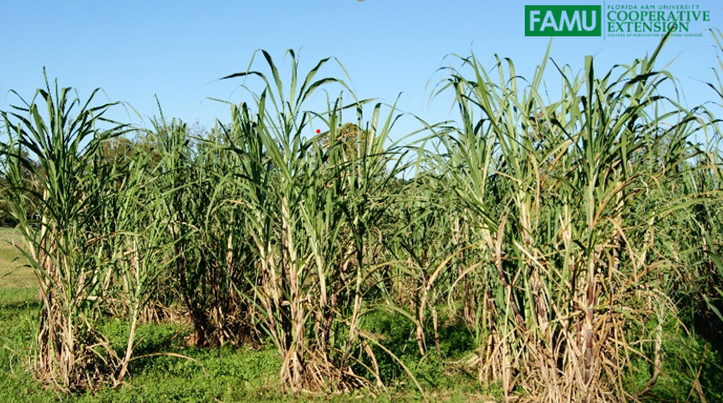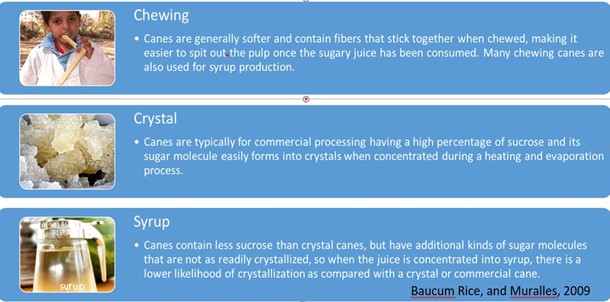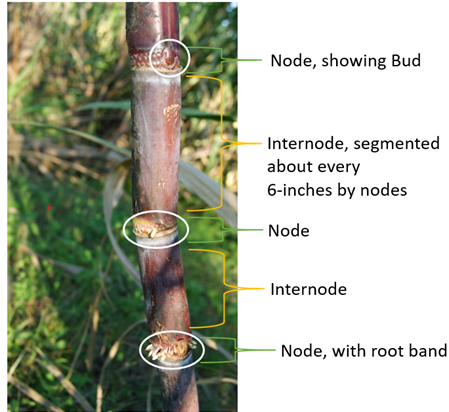Incorporating sugarcane into your North Florida small farm can create a captivating and unique feature, blending beauty with productivity. This perennial grass, belonging to the genus Saccharum and comes in various colors, ranging from green to red to purple. Different varieties are suited for specific purposes. Sugarcane can be cultivated for chewing (CP 31-511), crystallizing, or syrup production (CP36-500; CP67-500 and CP57- 603). The crop is grown mainly in subtropical and tropical regions and thrives in warm humid weather, and grows very fast here in north Florida.
This year, the Sugarcane Field Day was held on November 7, 2024, at the FAMU Research and Extension Center in Quincy, Florida. The workshop and mini-field day attracted small farm producers and homesteaders from the North Florida, South Georgia, and South Alabama.
The event focused on increasing agricultural awareness and providing small-acreage sugarcane producers and hobbyists with crop production/management advice, including insect pest management and machete safety tips. A big part of the workshop and field day was participant sharing. Farmers and homesteaders shared their cane production stories and syrup-making techniques at the workshop portion of the program. Sugarcane syrup making is an old tradition that has been practiced for several hundred years. Participants shared memories of their parents, grandparents, aunts, uncles, and neighbors’ growing sugarcane for syrup. The morning culminated with a sugarcane harvest and giveaway. The FAMU Research and Extension Center is helping to keep the cane syrup-making tradition going by hosting the annual sugarcane workshop and cane giveaway. This year, 45 growers attended the event, and we hope to continue the tradition for years to come.
–
–
Sugarcane production requires care and attention. However, overall, sugarcane is not considered a highly intensively managed crop. Nonetheless, special attention must be given to planting, pest management and harvesting. To assist growers in developing their sugarcane production, here are a few tips to follow.
–
Planting and Care
Sugarcane is exclusively grown from stalk cuttings, termed “seed-cane”. To propagate sugarcane vegetatively, cut mature cane stalks into smaller sections, each containing five to six “buds.” These buds, or growing points, are situated at the nodes along the canes. Having five to six buds ensures successful germination in case some buds fail. Orientation during planting is not critical, as emerging shoots find their way to the soil surface regardless.
Plant sugarcane in a sunny location with good drainage, and till the soil thoroughly for optimal root system growth. It can be planted in single or multiple parallel rows, with a recommended furrow depth of six inches. Because a single plant will produce many stalks, it is important to keep in mind the purpose for which you are planting.
A lot more plants will be needed for syrup making than for chewing. Allow 4 to 10 feet between “seed cane” stems and plant the stems horizontally, in a well-moistened furrow. Plant your sugarcane away from high foot-traffic areas, as the leaves can be very sharp, and some varieties tend to fall over and may become obstructive.
Sugarcane thrives best in soil with a pH of 5.5 to 6.5. Since it is in the grass family, sugarcane is a heavy feeder and thrives on nitrogen-rich fertilizers, such as a standard grass fertilizer. It likes full sun and will go dormant in winter. Fertilizer application should precede the laying of seed-cane pieces, with soil covering to a depth of four to six inches.
The main pests that threaten the plant are grubs, borers, termites, and aphids. But since sugar cane grows so fast, it can generally overcome limited infestations and chemical pesticides are not usually recommended. Nuisance wildlife, such as rodents and rabbits present a greater challenge. These usually can be controlled by installing physical barriers and placing traps.
–
Harvest
Sugarcane matures by early November the following year, if planted according to earlier instructions. A sugarcane plant can produce several stalks each, which can grow well over ten feet and become fully mature in about 12 to 14 months. Harvest mature stalks before a killing freeze, trim the green, upper portion, and either crush the stalks for juice or cut them for chewing.
Once cut, seed-canes should be stored in a cool, moist place for up to two weeks. Planting should occur either before a killing frost, this allows planted seed-pieces, with both shoot and root growth, to better withstand winter stress; or after the onset of winter, as this will induce dormancy followed by spring sprouting.
Spring regrowth occurs with warmer soil temperatures, requiring a fertilizer application similar to the initial planting. Sugarcane can continue producing for many years, but replanting every five to ten years ensures consistent harvests.
–
For additional guidance on growing sugarcane in North Florida, please contact your County Extension Office.
- 2025 Emerging Farmers Symposium – September 4 - August 8, 2025
- Farming Your Hobby into a Business - May 2, 2025
- FAMU Sugarcane Field Day Proves Interest is Still High for Local Farmers - November 15, 2024



